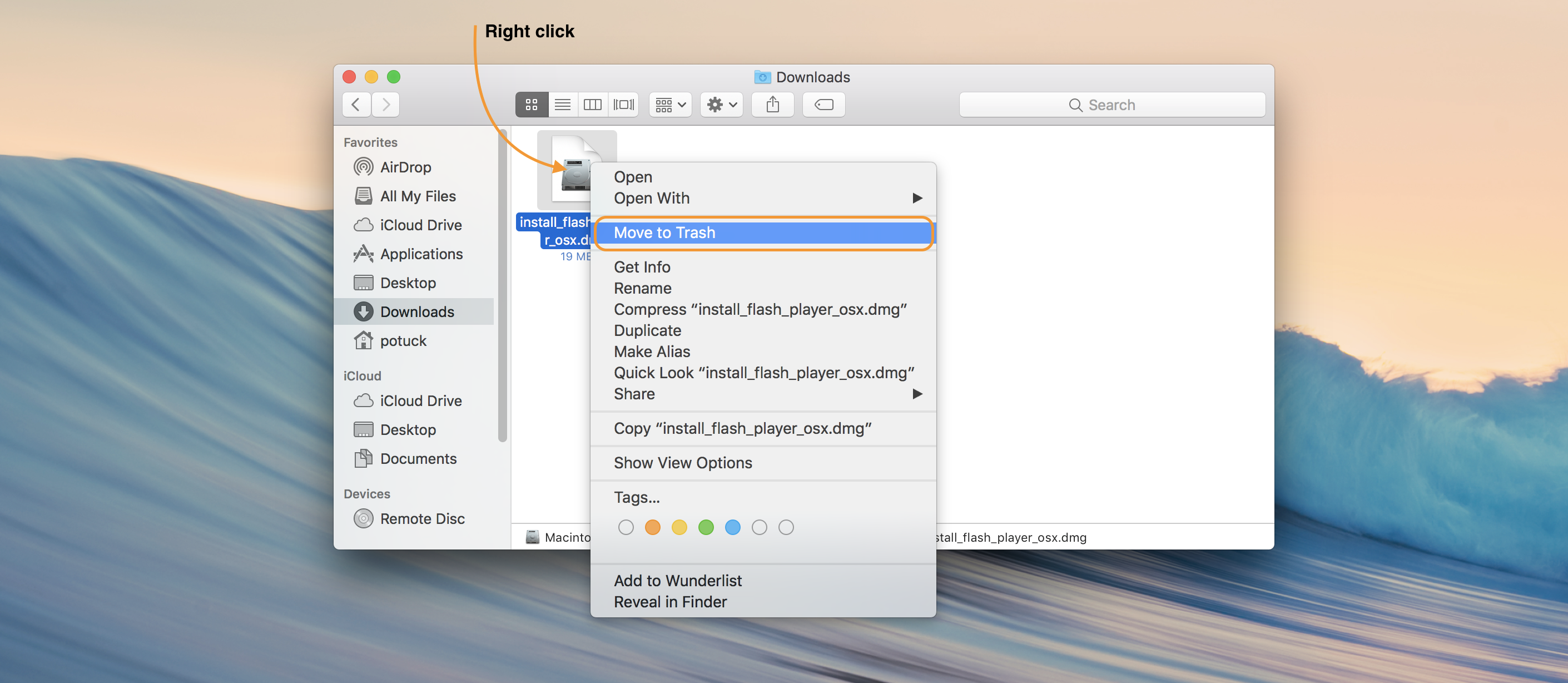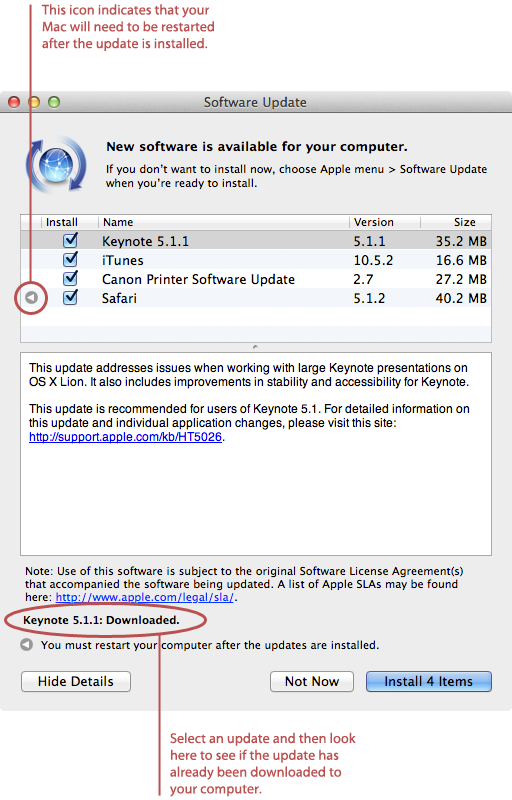- Way 1: Apple menu → System Preferences → Software Update. Choose Apple menu on your Mac, then choose System Preferences. Then click Software Update and Hit on the Update Now button next to the macOS 10.15 Update. After you do this, an installer will appear in span of a few seconds.
- Getting software updates on macOS The way to get updates on macOS is similar to the way iOS delivers updates—at least, that’s true if you get most of your Mac software from the App Store. To update apps purchased or downloaded from the Mac App Store, open the App Store app and click on Updates.
Fix Mac issues with Setapp
If you’ve been a PC user before switching to Mac, you know what a truly seamless experience updating macOS is compared to Windows. For a while, you’d just download a new version from the Mac App Store. Now, you don’t even need to do that — updates automatically appear as a notification on your Mac. What’s more, they are completely free!

Step 2: Click on the Software Update Option. Step 3: Choose Update/Upgrade Now. An 'Update Now' option is used when your current macOS version has some minor updates. While 'Upgrade Now' is used when a new macOS with a new name is installed. Also, you can check the 'Automatically keep my Mac up to date' option to install new updates automatically.
Fix macOS issues with Setapp
From installation to performance monitoring, Setapp has 190+ apps that help you safely upgrade to a new macOS.
Here’s how to update OS on Mac at any time:
Go to System Preferences ➙ Software Update
If there’s a MacBook update available, click Update Now
In 95% of cases, that’s all you need to do to update Mac software. However, very rarely, you might also see an error saying that the macOS installation couldn’t be completed or macOS update could not be installed or something similar. And there are a few ways to fix that.
What To Do To Get A MacBook Update
When you start analyzing what gets your macOS Big Sur install stuck, the first thing to pay attention to is the version of your Mac. As new and more feature-rich macOS updates appear, they stop supporting older Macs that are simply not powerful enough.
Here are all the Mac models supported by macOS Big Sur:
- iMac (2014 or newer)
- iMac Pro (2017 or newer)
- Mac Pro (2013 or newer)
- Mac Mini (2014 or newer)
- MacBook (2015 or newer)
- MacBook Air (2013 or newer)
- MacBook Pro (2013 or newer)
If you compare macOS Big Sur 11 system requirements to those of macOS Catalina, you’ll notice the latest version moved a year to two years ahead. So make sure you have a compatible Mac before trying to install an update.
Well, it’s technically possible to run Big Sur on even older Macs by installing a third-party patch, but this is not officially supported by Apple and is not generally recommended for the security of your Mac. Since macOS support usually lasts for more than five years on various Macs, it might be time to actually upgrade your setup — it’s going to serve you well.
Running a brand new Mac? Here are some more things to consider to make sure you never have your macOS update stuck again.
Check the system status at Apple
Being one of the largest tech companies in the world, Apple’s systems are very stable and rarely have a glitch. Still, fate might have it that you’ve tried to update Mac software exactly at the time when a server was undergoing maintenance.
To check that the Apple software update download problem is not on their end:
Go to apple.com/support/systemstatus
Look for macOS Software Update and see if it’s green
Make sure your WiFi network is up
If the problem is not with Apple’s network, it might be with yours. Having a volatile WiFi connection could easily be the reason behind the macOS installation couldn’t be completed error. Luckily, it’s easy to test:
Visit speedtest.net and click Go to see your current internet speed
Try switching to the Ethernet connection, if that’s an option
Contact your internet provider for support
In case you still see your Apple software update downloading, maybe you should just give it some more time (e.g. a couple hours) and wait.
Restart the update and your Mac
Let’s say that a few hours have passed and your update doesn’t seem to be moving anywhere — just cancel the process if it’s downloading or restart your Mac, by holding the power button, if you find macOS update stuck in installation.
Update Mac software via App Store
It might come as a surprise for some, but Apple software update downloads are also available via Mac App Store. The only catch is that those updates have to be between major versions (e.g. Catalina ➙ Big Sur) and not minor releases of the same macOS.
So if you’re still running on Catalina:
- Open App Store on your Mac
- Type “Big Sur” in the search field
- Click Get
What if you need to get an incremental update? For example, macOS 10.15.3 to 10.15.4. You’re in luck, since Apple posts all its software versions on its website as well:

- Visit support.apple.com/downloads
- Click Download on any update that interests you
- Double-click the .dmg file from your Downloads folder to start the process
Set date and time to automatic
Software Needs To Be Updated Macbook Pro
For one reason or another, you might have set your laptop to display custom time. Unfortunately, such a change might interfere with the MacBook update. To resolve this, try to set your time and date to be determined automatically:
Go to System Preferences ➙ Date & Time
Check the box next to “Set date and time automatically”
Go into Safe Mode
In some unique situations, you might have your Big Sur install stuck in black screen with no apparent ways out. Hold ⌘ + L to see the log of all activity and verify that no progress is being made. If not, it might be because some random processes are interfering with the proper installation, so you need to turn off your Mac and try to use it in Safe Mode.
Safe Mode starts up your Mac while blocking most of the external scripts, logs, or preferences, so nothing can get in the way of the system working properly.
To get your Mac in Safe Mode:

Turn it off
Press the power button while holding Shift
Try to do the MacBook update once again
Reset NVRAM on your Mac
A more involved step beyond getting into Safe Mode is wiping your non-volatile random-access memory (NVRAM) clean. NVRAM is used to store certain settings and preferences while your Mac is turned off, which could make it difficult to update Mac software if a logging error has crept in somewhere there.
To wipe out NVRAM, restart your Mac and hold ⌘ + Option + P + R. Then try to initiate the update once again.
Reinstall macOS in Recovery Mode
If neither Safe Mode nor resetting NVRAM helps, you could try the most definitive solution — reinstalling macOS in Recovery Mode.
Unlike Safe Mode, Recovery Mode basically forces you to get a brand new version of the operating system, preferably deleting all the contents of your hard drive in the process (using Disk Utility) to ensure that errors like “macOS could not be installed on your computer” don’t appear again in the future.
To reinstall macOS in Recovery Mode:
Hold ⌘ + R when you’re restarting your Mac to get the same macOS. For the newest version possible, use ⌘ + Option + R.
Choose Reinstall macOS out of the options given
Click Continue
Go through the installation process
Read more about how do I update my operating system on my Mac
How to restore your Mac from backup
For active Mac users who haven’t done much in the realm of optimization for a while, it’s strongly suggested to delete all their hard drive contents during the reinstallation of macOS using Disk Utility. Naturally, no one wants to lose years of their data — that’s why frequent backups are so essential.
Get Backup Pro is by far the most complete backup solution available today. You can easily do straightforward backups, and the app will compress the size of the archive by up to 60%, or you can do backups incrementally, only updating the files that have changed since the last backup. Other options include cloning your whole volume to a new external drive, so you can have your Mac with you anywhere on the go, and synchronizing folders between Macs to always have the same access to critical information.
What’s more, with Get Backup Pro you can schedule all the processes to never forget to update your backups and never lose more than a few days (or even hours) of data.
How to keep your Mac optimized
What if the macOS update could not be installed because your Mac is simply too old? Don’t despair, you can still get a lot of the perks of having a brand new macOS by properly optimizing your Mac.
Prepare Mac for new macOS
Too much clutter and system junk can cause macOS installation problems. Get CleanMyMac X to optimize Mac before upgrading.
Mac Os This Software Needs To Be Updated
CleanMyMac X will do wonders by instantly speeding up any setup you’ve got. It’s essentially a powerful system-wide booster that scans any areas of your Mac and finds ways to make them work better, whether that’s your browser, email client, RAM, or simply various useless logs sprinkled throughout.
To accelerate your Mac’s speed with CleanMyMac X:
Open the app and go to Smart Scan
Click Scan
After the process is complete, select Review Details…
Uncheck everything you don’t want to happen and hit Run
Repeat the process every few weeks and you’d be surprised how fast your Mac can be. And it doesn’t even have to be an old Mac — CleanMyMac X helps all!
How to monitor your Mac’s performance
So you’ve learned how to update OS on Mac, back it up with ease, and generally increase its speed. Now what? Basically, you need to make sure that none of those pesky errors ever happen again. In other words, you need a good monitoring solution.
iStat Menus is an all-in-one system data collector that’s always handily accessible from your menu bar. It shows your current CPU and GPU load, RAM availability, internal temperature, battery capacity, network bandwidth, and much more. The idea here is that you can spot your Mac underperforming in real time and fix the issue way before it becomes a problem. An ounce of prevention is worth a pound of cure, as they say.
Now you can see that even if you thought the macOS installation couldn’t be completed, with the right approach it’s still possible. In addition, it’s highly recommended that you create frequent backups with Get Backup Pro, optimize your Mac with CleanMyMac X, and monitor its state for any inconsistencies with iStat Menus.
Best of all, Get Backup Pro, CleanMyMac X, and iStat Menus are available to you at no cost whatsoever through a seven-day trial of Setapp, a platform with more than 200 indispensable apps that would make every task on your Mac a breeze. Sign up today for free and see for yourself!